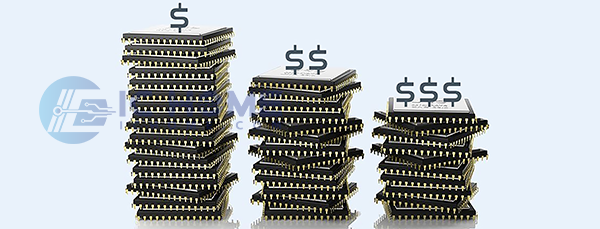Why Electronic Component Prices Are Rising: The Impact of Inflation, Tariffs, and Exchange Rates
In recent years, procurement professionals across the electronics industry have faced increasing challenges in sourcing components at stable prices. One recurring trend is the steady rise in electronic component costs, driven not only by supply-demand dynamics but also by broader macroeconomic factors. Understanding how inflation, tariffs, and foreign exchange (FX) rates affect pricing is crucial for more resilient and strategic component sourcing.

1. Inflation: A Global Cost Driver
Inflation, particularly post-pandemic, has become a dominant force influencing the cost of raw materials, labor, logistics, and energy — all of which are critical to semiconductor manufacturing and distribution. As manufacturers pass on these costs to the supply chain, buyers face higher prices, even for widely used components such as MLCCs, MOSFETs, and MCUs.
For example, copper and silicon—key raw materials in many components—have seen price increases of over 30% in the past two years. Combined with rising wages in manufacturing hubs like Southeast Asia and Mexico, the base cost of components has gone up globally.
2. Tariffs and Trade Barriers: Political Influence on Prices
Global trade policies have also played a critical role. The U.S.-China trade tensions introduced a wave of tariffs on electronic components and subassemblies imported from China. These tariffs directly inflate the landed cost for buyers in North America and other regions that rely on Chinese manufacturing.
Similarly, EU policies around import duties and regulatory compliance (e.g., RoHS, REACH) have added administrative and certification costs to certain components. For procurement teams, these trade complications require careful supplier diversification and cost analysis to avoid margin erosion.
3. Foreign Exchange Volatility: The Hidden Cost
When components are sourced globally, currency fluctuations can become a silent budget killer. A weakening local currency relative to the U.S. dollar or Chinese yuan can significantly increase purchase prices.
Take, for instance, a buyer based in Turkey or India. If the local currency depreciates by 15% against the U.S. dollar over a year, a component priced in USD will cost proportionally more — even if the supplier's base price remains unchanged. For procurement managers working across multiple currencies, hedging strategies and multi-currency supplier negotiations are becoming essential.
4. Market Tightness Amplifies Price Pressures
In times of component shortages, such as during the global chip crisis of 2021–2022, these macroeconomic factors get magnified. Distributors and OEMs often face price spikes not only due to limited availability but also because suppliers capitalize on tight lead times and urgent orders.
With economic volatility, long-term price visibility becomes difficult. Buyers may find themselves competing globally for limited stock, while also dealing with regional inflation and logistical bottlenecks.
5. How Procurement Teams Can Respond Strategically
To mitigate the impact of these economic pressures, here are several strategies that electronic component buyers can adopt:
-
Forecast Intelligently: Use rolling forecasts and demand signals to plan purchases 3–6 months ahead.
-
Multi-Source Critical Components: Avoid dependency on one region or supplier.
-
Engage With Strategic Distributors: Work with trusted partners who offer buffer stock, alternative part suggestions, and transparent lead time updates.
-
Negotiate Currency Terms: Lock in pricing or discuss multi-currency quotations with suppliers in volatile regions.
-
Leverage Digital Tools: Use component sourcing platforms that track real-time pricing and availability across markets.
Conclusion
The rising cost of electronic components is no longer just a supply-chain issue—it's a broader economic one. By understanding how inflation, tariffs, and FX rates contribute to pricing, procurement professionals can take proactive steps to manage risk and maintain cost control.
At ICHOME, we help buyers navigate these challenges by offering diversified sourcing, flexible terms, and deep market insights. Contact us today to explore smart sourcing strategies that protect your margins in a volatile market.




